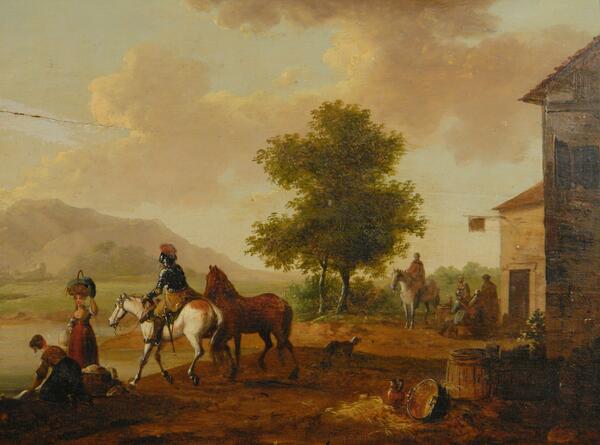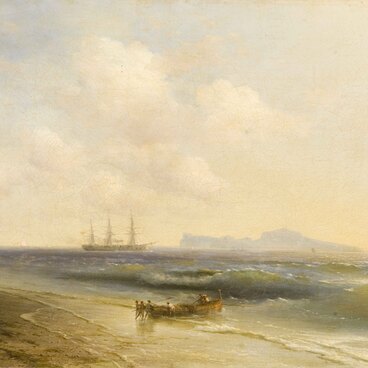Francesco Casanova (1727 - 1802) is a battle and landscape painter, brother of the famous adventurer and writer Giacomo Casanova. Their parents were actors from Venice who toured with performances in Europe. The beginning of his artistic training took place in the workshops of Giovanni Guardi and Francesco Simonini.
The 18th century was the heyday of the Venetian school, when genre painting developed, reflecting the beauty of Venice’s everyday life, the sophistication of its architecture, and the poetry of nature. Famous artists of the genre include Giovanni Battista Piazzetta, Pietro Longhi, Antonio Canaletto, Francesco Guardi. The features of the Venetian school were reflected in the further work of Francesco Casanova, although he spent most of his life outside the region.
The artist continued his studies in Paris with the battle painter Charles Parrosel and also devoted himself entirely to battle studies. He also created landscapes, tapestry and upholstery projects, and worked on genre scenes close to the old Dutch painting. In 1761 he was elected a member of the French Royal Academy, which ensured him the patronage of high-ranking officials.
Commissioned by Catherine II, he created paintings with scenes of the Russian army victories over the Turks, including large-scale images of the Ochakovo and Izmail siege, which are in the collection of the State Hermitage. Several of his landscapes are presented in the collection of the Pushkin State Museum of Fine Arts in Moscow.
His painting “At the Tavern” from the collection of the Tarusa Art Gallery presents an unpretentious everyday scene against the backdrop of a hilly landscape. It contains figures of people, each of whom is busy with their daily affairs, as well as images of animals. The characters are shown interacting. The girls at the wash are fond of conversation, the rider is on his way, and the dog is probably barking at the bunch of people in the background. The rural life is reflected with great attention to detail. The artist prefers subtle color solutions, which gives him the opportunity to recreate the black-and-white environment and a believable landscape.
The 18th century was the heyday of the Venetian school, when genre painting developed, reflecting the beauty of Venice’s everyday life, the sophistication of its architecture, and the poetry of nature. Famous artists of the genre include Giovanni Battista Piazzetta, Pietro Longhi, Antonio Canaletto, Francesco Guardi. The features of the Venetian school were reflected in the further work of Francesco Casanova, although he spent most of his life outside the region.
The artist continued his studies in Paris with the battle painter Charles Parrosel and also devoted himself entirely to battle studies. He also created landscapes, tapestry and upholstery projects, and worked on genre scenes close to the old Dutch painting. In 1761 he was elected a member of the French Royal Academy, which ensured him the patronage of high-ranking officials.
Commissioned by Catherine II, he created paintings with scenes of the Russian army victories over the Turks, including large-scale images of the Ochakovo and Izmail siege, which are in the collection of the State Hermitage. Several of his landscapes are presented in the collection of the Pushkin State Museum of Fine Arts in Moscow.
His painting “At the Tavern” from the collection of the Tarusa Art Gallery presents an unpretentious everyday scene against the backdrop of a hilly landscape. It contains figures of people, each of whom is busy with their daily affairs, as well as images of animals. The characters are shown interacting. The girls at the wash are fond of conversation, the rider is on his way, and the dog is probably barking at the bunch of people in the background. The rural life is reflected with great attention to detail. The artist prefers subtle color solutions, which gives him the opportunity to recreate the black-and-white environment and a believable landscape.




